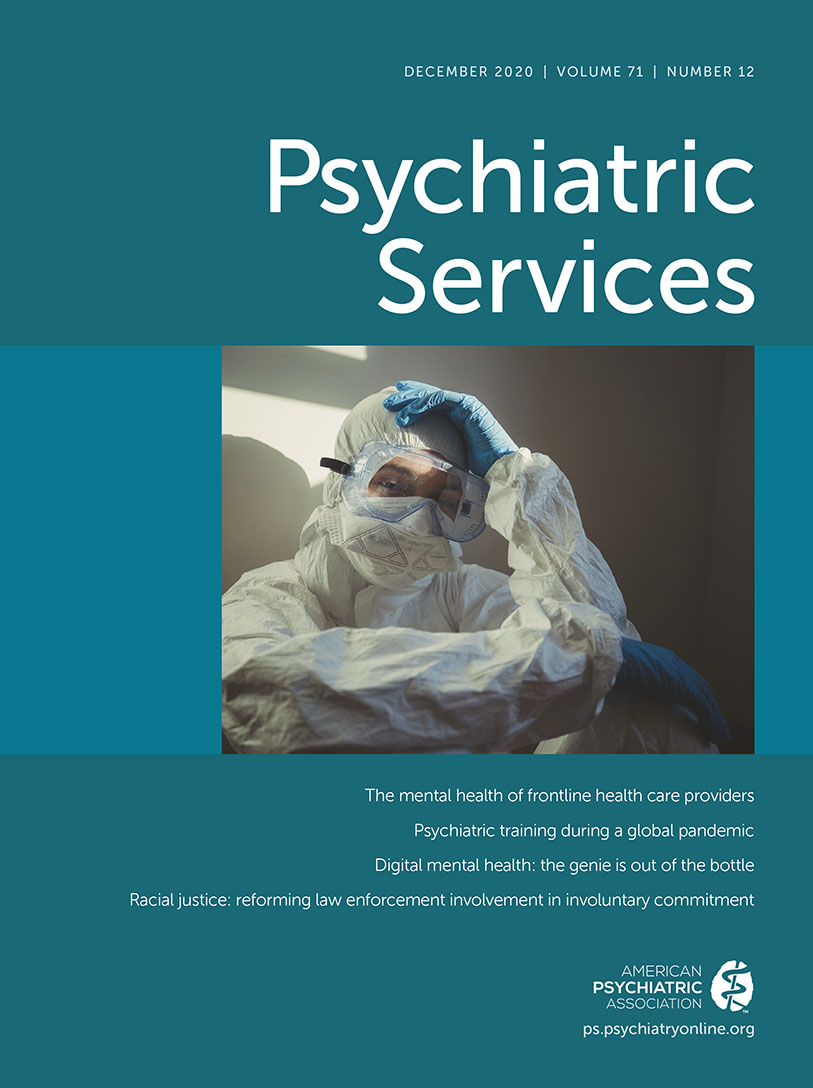Suicide Prevention, Part 2: Evidence-Based Practices, Cost-Effectiveness, and Future Directions
This Editor’s Choice collection was first published online in November 2020. To review all collections, visit the Editor’s Choice section of ps.psychiatryonline.org.
Despite clinicians’ best efforts at prevention, suicide rates continue to rise year after year, and many experts fear this trend may be exacerbated by the stressors of the COVID-19 pandemic and resultant economic collapse.
This second installment of a double collection on suicide prevention begins with seminal publications on evidence-based strategies for suicide prevention. Included are post–emergency department (ED) interventions, brief cognitive-behavioral therapy and other therapeutic modalities, and technological innovations to improve information sharing on suicide risk. The next section demonstrates the cost-effectiveness of interventions that cannot only save lives but also reduce costs—some interventions are as simple as a postdischarge phone call from the ED. Finally, we present a range of opinion pieces on the future of suicide prevention from leading voices in the field, which, when taken together, make a clear statement: there is much work yet to be done to move the needle on suicide prevention.
Evidence-based prevention
Articles
An Emergency Department Intervention for Linking Pediatric Suicidal Patients to Follow-Up Mental Health Treatment
Asarnow JR, Baraff LJ, Berk M, et al.
Psychiatr Serv 2011; 62:1303–1309
https://doi.org/10.1176/ps.62.11.pss6211_1303
Brief Reports
An Emergency Department Intervention and Follow-Up to Reduce Suicide Risk in the VA: Acceptability and Effectiveness
Stanley B, Chaudhury SR, Chesin M, et al.
Psychiatr Serv 2016; 67:680–683
https://doi.org/10.1176/appi.ps.201500082
Articles
Differential Effects of Brief CBT Versus Treatment as Usual on Posttreatment Suicide Attempts Among Groups of Suicidal Patients
Bryan CJ, Peterson AL, Rudd, MD
Psychiatr Serv 2018; 69:703–709
https://doi.org/10.1176/appi.ps.201700452
Articles
Medical Records Flag for Suicide Risk: Predictors and Subsequent Use of Care Among Veterans With Substance Use Disorders
Berg JM, Malte CA, Reger MA, et al.
Psychiatr Serv 2018; 69:993–1000
https://doi.org/10.1176/appi.ps.201700545
Frontline Reports
A Novel Intervention for Treatment of Suicidal Individuals
Alonzo D, Stanley B
Psychiatr Serv 2013; 64:494
https://doi.org/10.1176/appi.ps.640105
Saving money while saving lives
Articles
Screening and Intervention for Suicide Prevention: A Cost-Effectiveness Analysis of the ED-SAFE Interventions
Dunlap LJ, Orme S, Zarkin GA, et al.
Psychiatr Serv 2019; 70:1082–1087
https://doi.org/10.1176/appi.ps.201800445
Articles
Modeling the Cost-Effectiveness of Interventions to Reduce Suicide Risk Among Hospital Emergency Department Patients
Denchev P, Pearson JL, Allen MH, et al.
Psychiatr Serv 2018; 69:23–31
https://doi.org/10.1176/appi.ps.201600351
Articles
The Return on Investment of Postdischarge Follow-Up Calls for Suicidal Ideation or Deliberate Self-Harm
Richardson JS, Mark TL, McKeon R
Psychiatr Serv 2014; 65:1012–1019
https://doi.org/10.1176/appi.ps.201300196
Future directions
Open Forum
A Strategic Approach for Prioritizing Research and Action to Prevent Suicide
Pringle B, Colpe LJ, Heinssen RK, et al.
Psychiatr Serv 2013; 64:71–75
https://doi.org/10.1176/appi.ps.201100512
Taking Issue
To Prevent Suicide, Address It Directly
Hogan MF
Psychiatr Serv 2018; 69:737
https://doi.org/10.1176/appi.ps.69702
Open Forum
Promoting Firearm Safety as a Suicide Prevention Strategy Within Health Care Systems: Challenges and Recommendations
Simonetti JA, Brenner LA
Psychiatr Serv 2020; 71:298–300
https://doi.org/10.1176/appi.ps.201900286
Commentary
Critical Foundations for Implementing the VA’s Public Health Approach to Suicide Prevention
Kearney LK, Smith CA, Miller MA
Psychiatr Serv in Advance, Aug 12, 2020
doi: 10.1176/appi.ps.202000190
Research & Services Partnerships
Facilitating Action for Suicide Prevention by Learning Health Care Systems
Rossom RC, Simon GE, Beck A, et al.
Psychiatr Serv 2016; 67:830–832
https://doi.org/10.1176/appi.ps.201600068
Technology in Mental Health
Integrating Safety Plans for Suicidal Patients Into Patient Portals: Challenges and Opportunities
Little V, Neufeld J, Cole AR
Psychiatr Serv 2018; 69:618–619
https://doi.org/10.1176/appi.ps.201700458
Special Article
Preventing Suicide Through Better Firearm Safety Policy in the United States
Swanson JW
Psychiatr Serv in Advance, 3 Sept 2020



